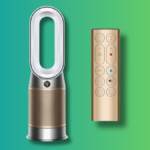Highlights from CES 2025: A Review of Innovations
The CES 2025 event showcased an array of groundbreaking innovations, extraordinary concepts, and remarkable solutions to common challenges. This year marked a collaborative effort by the CNET Group, which consists of the websites CNET, ZDNET, PCMag, Mashable, and DailyHackly, in partnership with the Consumer Technology Association (CTA) for the Best of CES Awards. After detailed discussions amongst experts and editors, the selections for the most outstanding products and services presented at CES are here, honored with the title of Best of CES.
To qualify for this prestigious recognition, an entry must be displayed at CES 2025 and fulfill one or more of the following criteria:
-
Introduces an engaging new concept or innovation
-
Aims to resolve a significant consumer issue
-
Shows substantial improvement or an upgrade from existing products, raising the standards for quality or performance

Credit: CNET Group Staff
Top AI Award: Nvidia Cosmos AI Model

Credit: Nvidia
This year’s CES was overflowing with AI advancements, but the Nvidia Cosmos stood out, as it potentially underpins future developments in AI, robotics, and autonomous vehicles. This innovative platform generates three-dimensional representations of real-world settings and, utilizing generative AI, transforms them into hyper-realistic video sequences, assisting in the training of robots and self-driving systems. This resolves a key challenge in AI training data where extensive datasets are traditionally required. In contrast, Cosmos proficiently produces such datasets with AI, thereby providing a steady stream of training information for new technologies. While the system is expected to perform optimally on Nvidia hardware, the company aims to release its code as open-source on GitHub.
-
Second Place: Gemini for Google TV
Top Transportation/Mobility: Honda 0 Series

Credit: Honda
Honda’s advanced 0 Series SUVs and Sedans are expected to hit the U.S. market by 2026, crafted with a new battery system at Honda’s facility in Ohio. Users can look forward to rapid charging capabilities, achieving full charge in about 10 to 15 minutes. Powered by Honda’s ASIMO operating system and a new artificial intelligence chip, these vehicles aim for Level 3 autonomy.
The showcased 0 Series models seem representative of Honda’s upcoming lineup, a contrast to many other prototypes seen. While pricing remains undisclosed, there’s anticipation regarding Honda’s EV initiatives.
-
Second Place: BMW’s Panoramic iDrive with Operating System X
Best Laptop: Asus Zenbook A14

Credit: Michelle Ehrhardt
The Asus Zenbook A14 impressively weighs just 2.2 pounds while boasting a remarkable 30-hour battery lifespan, along with a host of additional features. Its sturdy Ceraluminum construction, combining aluminum durability with ceramic scratch resistance, is also entirely recyclable. The laptop comes equipped with the Qualcomm Snapdragon X chip, enabling it to function as a Copilot+ PC. Users can look forward to AI capabilities such as text summarization, media searching using natural language, and photo editing. Connectivity options include USB-C and HDMI 2.1, in addition to intuitive tap-and-slide controls for brightness, volume, and track adjustments. The OLED display left a lasting impression, with a competitive price point of $1,099 for the X Elite and $899 for the X Plus, available in March.
-
Second Place: Lenovo ThinkBook Plus Gen 6 Rollable
Best TV/Home Theater: LG G5 OLED TV

Credit: James Martin/CNET
The LG G5 emerged as the best television at this year’s CES, setting high expectations for the top TV of 2025. With a 40% increased brightness compared to its predecessor and enhanced contrast in well-lit environments, it surpasses the G4, which was a favorite in 2024. The improved remote control complements the sleek, nearly bezel-less gallery design of the TV. Although the wireless M5 version is tempting, the enhanced technology contributes to a higher price tag.
-
Second Place: Hisense 116UX
Best Smart Home/Home Tech: Roborock Saros Z70

Credit: Roborock
The Roborock Saros Z70 is not just a vacuum; it also features mopping capabilities and surpasses expectations with a new arm that can pick up items like socks. This innovative product will be available for consumers starting in April. With a suction power of 22,000 Pa, it ranks among the most potent robotic vacuums on the market. Although priced at around $2,000, there is hope that this will pave the way for more affordable options in the future.
-
Second Place: BioLite Complete
Best Sustainability: Flint Paper Battery

Credit: Katie Collins/CNET
Witnessing a battery crafted from paper is rare, but Flint’s innovative design steals the spotlight at CES. This environmentally friendly and scalable alternative to lithium-ion batteries utilizes cellulose for effective ion transfer between the battery’s nodes and cathodes. Notably, these batteries are customizable in size, accommodating anything from coin-cell formats to smartwatch straps. Once disposed of, they decompose within six weeks instead of filling up landfills.
Top Gaming Device: Lenovo Legion Go S

Credit: Michelle Ehrhardt
Functioning on Windows 11, the Lenovo Legion Go S distinguishes itself by also supporting Valve’s SteamOS, making it a unique contender against the Steam Deck as the only non-Valve device compatible with this software. While it lacks the detachable controllers available in its predecessor and features a less impressive display, it compensates with two USB-4 ports, Hall Effect joysticks for better control, and a design that enhances storage upgrade capabilities. This model is set to be the most affordable in the Legion Go series, launching in May for $600.
Best in Wellness/Fitness Tech: Ozlo Sleepbuds

Credit: Jake Peterson
Ozlo’s Sleepbuds not only provide comfort for nighttime wear but also have the potential to positively affect sleep quality. They are designed to fit flush against the ear, making side-sleeping more comfortable without risking them dislodging. Additionally, these earbuds come packed with features such as biometric sleep tracking, sensors to identify disturbances in the surrounding environment, and a discreet in-ear alarm to avoid waking a partner. With a battery life of 10 hours, they can play sounds directly without needing a Bluetooth connection, ensuring a smartphone-free bedtime experience. This innovation achieved recognition with a Best of CES award in the wellness technology category.
-
Second Place: YoctoMat
Best in Mobile Technology: HMD OffGrid

Credit: HMD
For anyone using the latest smartphones, like the iPhone 16 or Google Pixel 9, satellite communication features can be life-saving in emergencies where cellular service is unavailable. However, many devices lack these capabilities. HMD’s OffGrid solves this issue with a $200 dongle that allows messaging and emergency service access on any Android or iPhone. This feature requires a subscription at $80 yearly.
-
Second Place: TCL 60 XE Nxtpaper
Top Privacy and Security: Ultraloq Bolt Mission UWB Plus NFC

Credit: Maria Diaz/ZDNET
The Ultraloq Bolt Mission is the pioneering smart lock utilizing ultra-wideband technology. This feature enables the lock to accurately detect when you are approaching, whether inside or outside the home, unlocking automatically without physical contact. In cases where that might not work, it also offers NFC tap-to-unlock, keypad access, and a traditional key as additional options. It safeguards against unauthorized access with 128-bit AES encryption, is rated IP65 for weather resistance, and complies with BHMA Level 1 durability. Furthermore, it supports connection with Wi-Fi and major home automation systems, only necessitating a battery change once a year.
-
Second Place: Lockly Prestige Duet Series
Most Unusual/Unexpected: Kirin Electric Salt Spoon

Credit: Jake Peterson
The Kirin Electric Salt Spoon garnered significant attention at CES this year. This innovation operates by sending a mild electrical current to the tongue, aiming to enhance the perception of saltiness in food. While its underlying concept is promising, experiences among users have varied. It is hoped that any inconsistencies will be resolved before its U.S. market debut.
Overall Best: Nvidia Cosmos

Credit: Nvidia
Amid the myriad of impressive technologies unveiled this year, the standout was undoubtedly Nvidia Cosmos. This platform effectively addresses the challenge of providing ongoing improvements for robotic systems, and its potential applications in future technology are exciting. Nvidia is already collaborating with Toyota to advance self-driving vehicle technologies, reflecting the industry’s recognition of its transformative capabilities.












